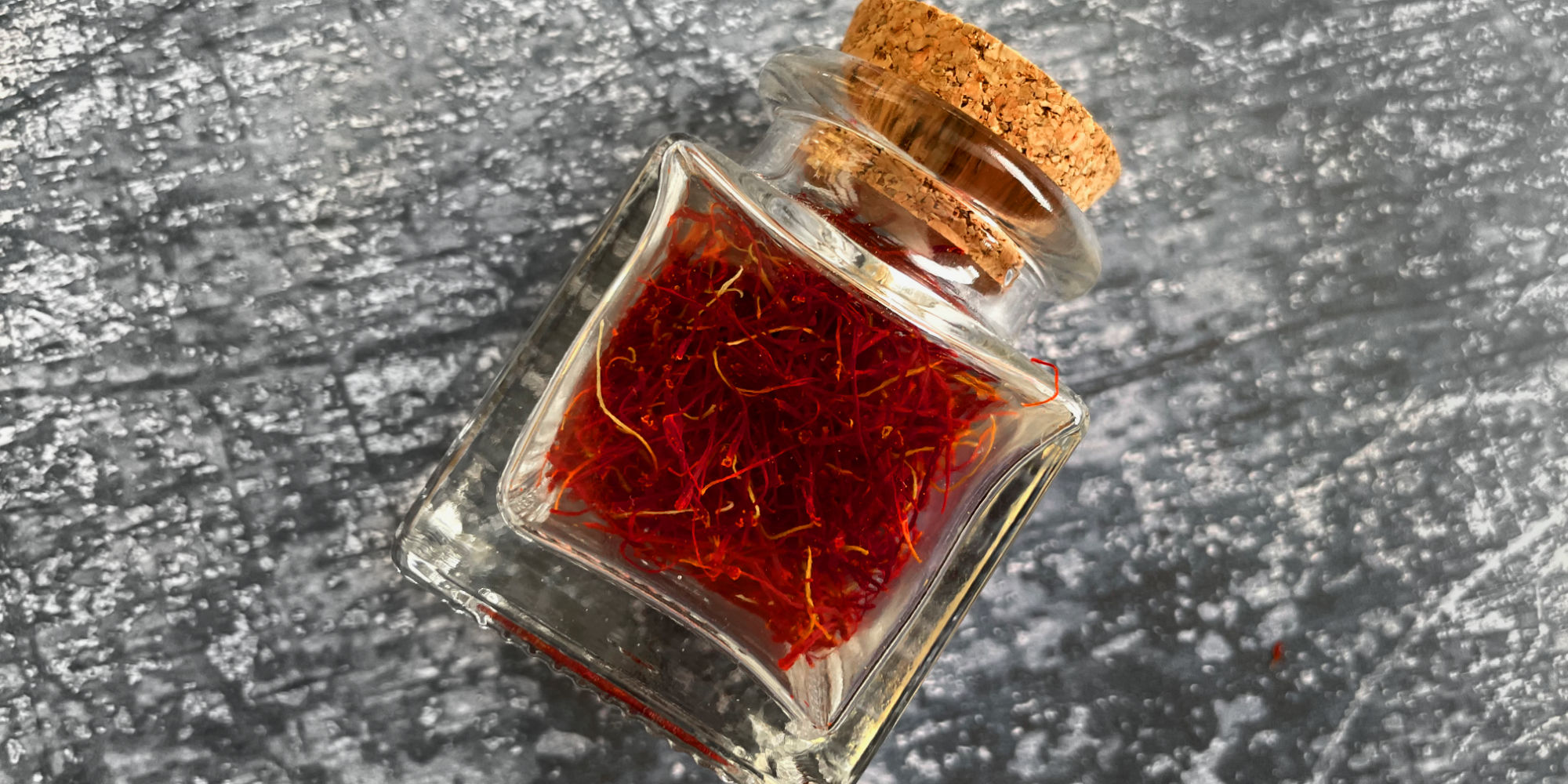At then beginning of October last year I was browsing online, looking for something to plant and grow in those days when the summer harvests were coming to an end and I wasn’t yet quite ready to embrace the shortening days. Quite by chance I found some discounted saffron crocus bulbs online, and the impulsive side of me clicked ‘buy’ on a hundred Crocus sativus corms.

The term ‘sativus’ (sativa, sativum) comes from the Latin for to ‘sow’ or ‘plant’, and in modern usage means that it is a cultivated crop, and usually appended to botanic cultivars that are grown specifically for human usage as health beneficial foodstuffs, herbs, spices, and medicinal crops. In the case of the saffron crocus, this little unassuming bloom is grown for its bright orange-red stigmas, which are dried and used in cuisine and prized for being the most expensive spice in the world.
I’d always assumed that saffron was a hot weather crop, suitable only to climates far warmer than my West Midlands UK garden would allow, but actually this culinary form of crocus is an Autumn crop, and planting the corms on the 19th of October gave me an almost instant reward, because by the 2nd of November I was harvesting the first few strands of saffron ready for drying.
Everything that I’d read about growing saffron crocuses said not to expect much, if any, harvest for the first year of planting, but I must have been very lucky as I ended up with what I’d say was a surprisingly bounteous harvest of those precious red stigmas.

Each saffron crocus gives just three stigmas, and the threads of saffron that result after drying feel almost weightless. Roughly 150 flowers (and therefore 450 stigmas) yield 1 g of dry saffron threads, making saffron a labour intensive (and therefore expensive) crop to grow commercially.
Plucking the stigmas from the centre of the flowers stained the tips of my fingers golden orange, and the stain that persisted over those harvesting days made me feel like I had really achieved something unexpected and special, as if I had earned those golden fingertips.
Drying the saffron was a joy. As the days grew colder I sat it out of direct heat but in a warm area to dry on paper towels, and the air was filled with the perfume of the saffron. The smell was heady and rich and so much stronger than I ever thought it might be.

I don’t know how much saffron I harvested, and it doesn’t matter. It is more than I ever thought I’d have in my kitchen at any one time. I had a perfect little jar to store it in, which had once before held a much smaller quantity of purchased saffron, and which I’d kept because I knew I’d want to use it for something some day. As it happened, its original purpose was the right one. Far from being a mostly empty vessel as it had been when I bought it with just a few saffron strands, my homegrown saffron filled it to the very top, with the threads of saffron packed in snug.
I took these pictures yesterday. It isn’t the full harvest as I’ve been enjoying using the saffron more freely in my cooking than I would if I had been using shop bought spice. I’ve sometimes popped a few threads into a masala chai for a calming drink. Now it is a welcome and appreciated part of my kitchen larder to be enjoyed whenever I please, and I hope later this year to once again find myself with golden fingertips at the time when the sunlight is a blue-grey, but there is still something to grow.
